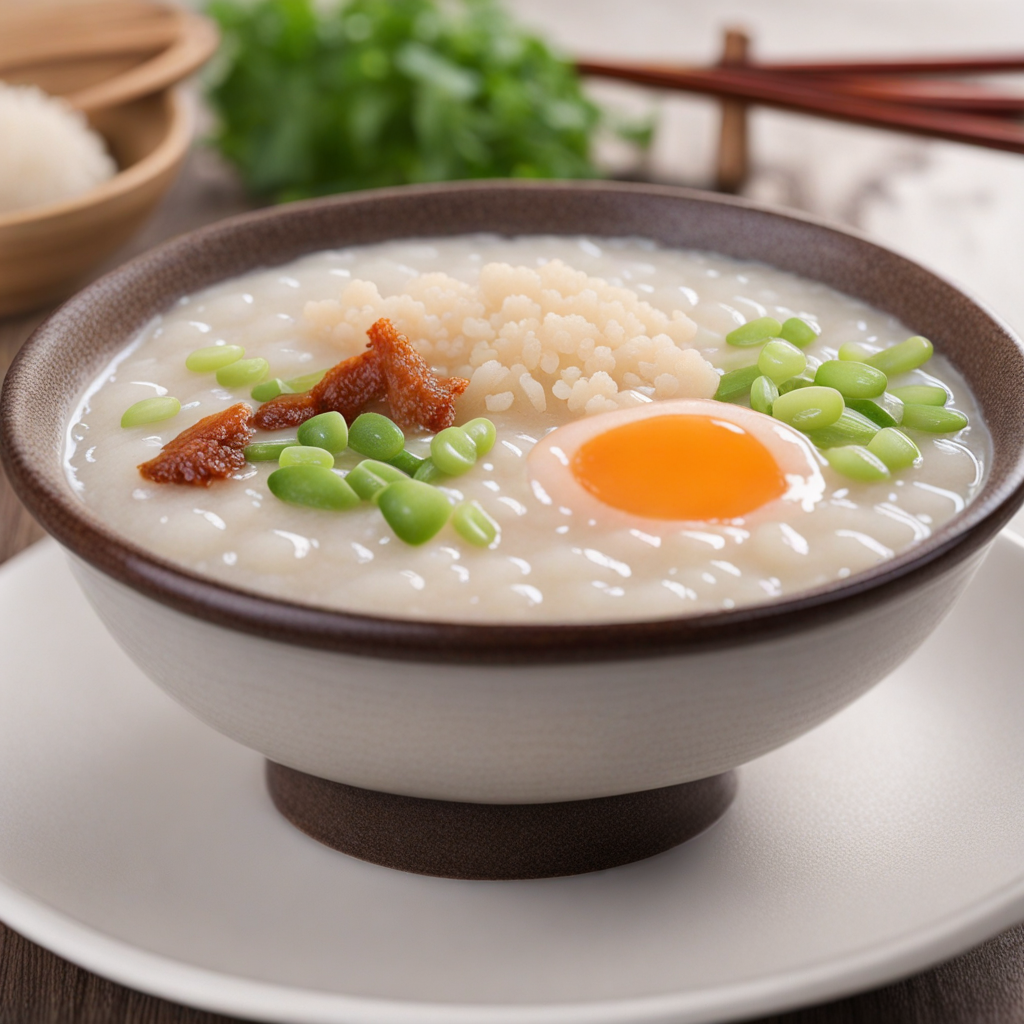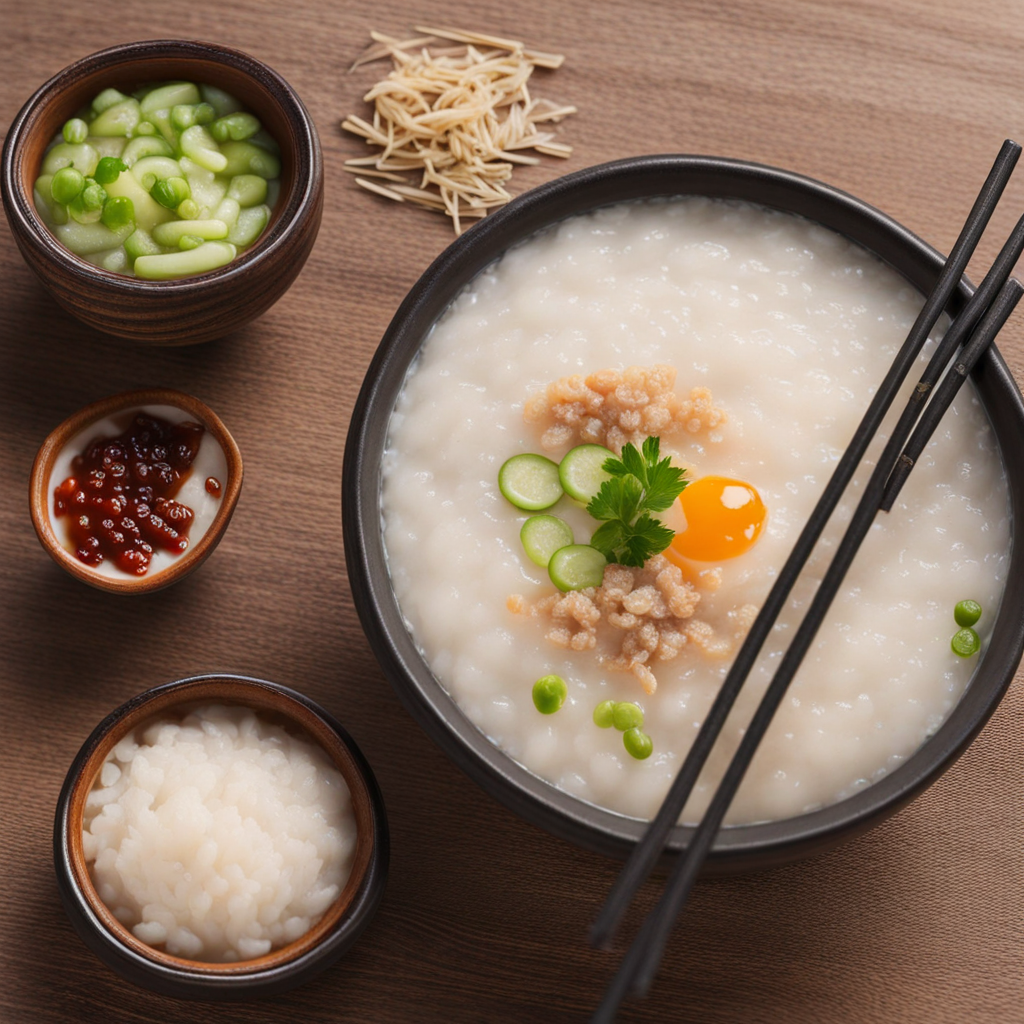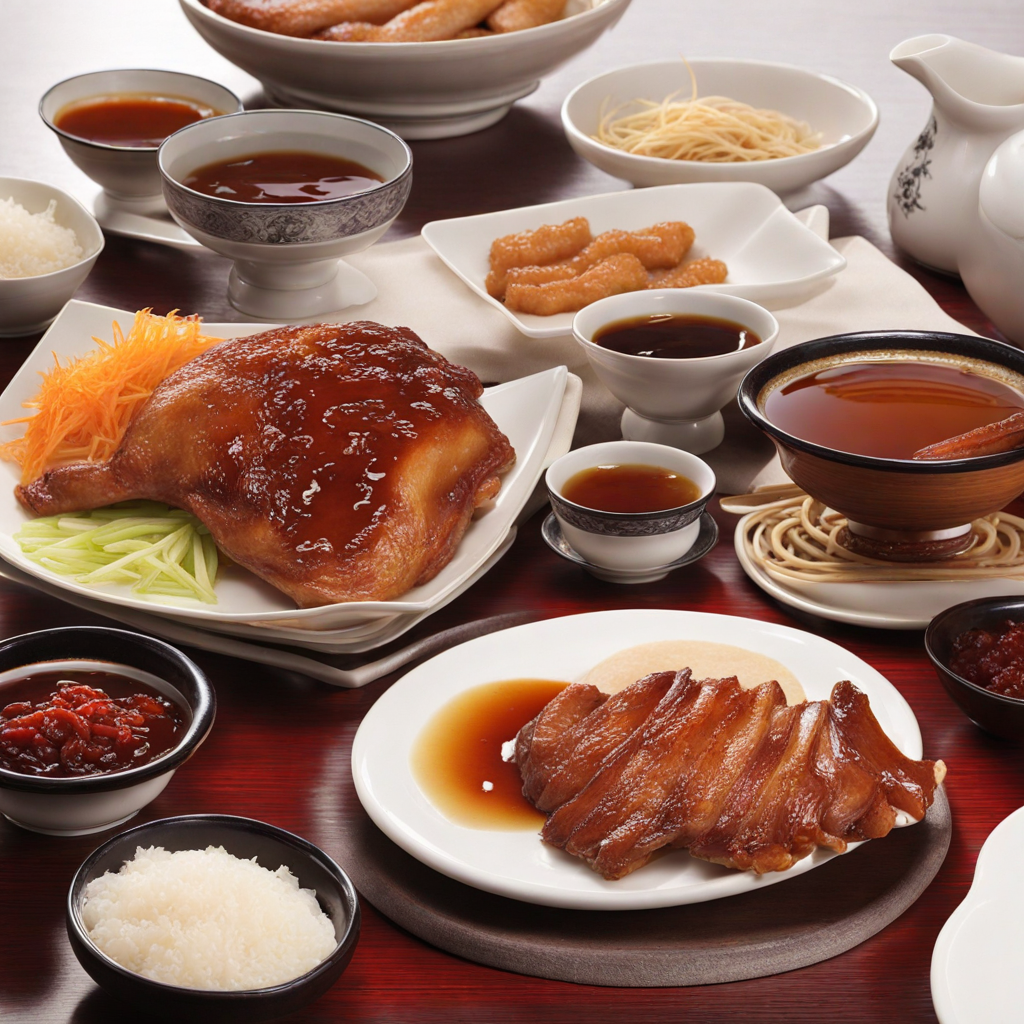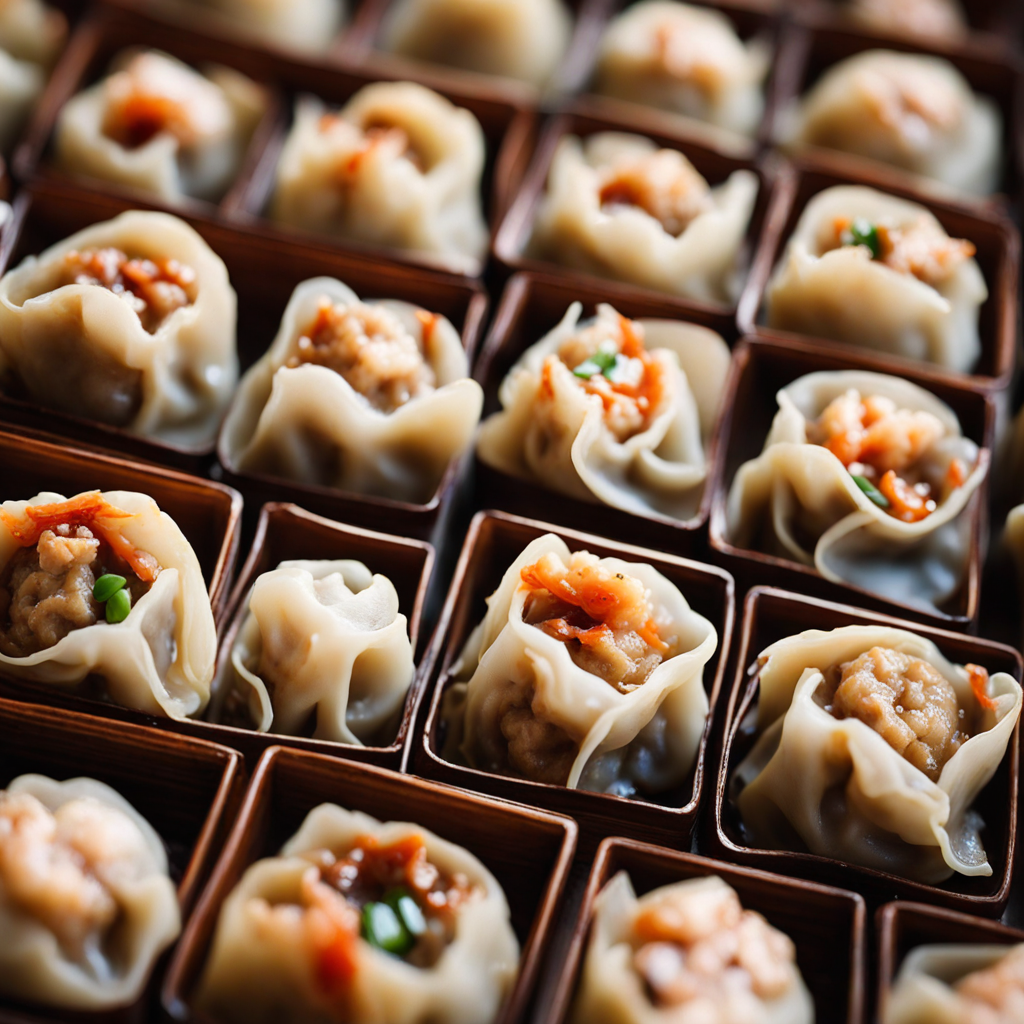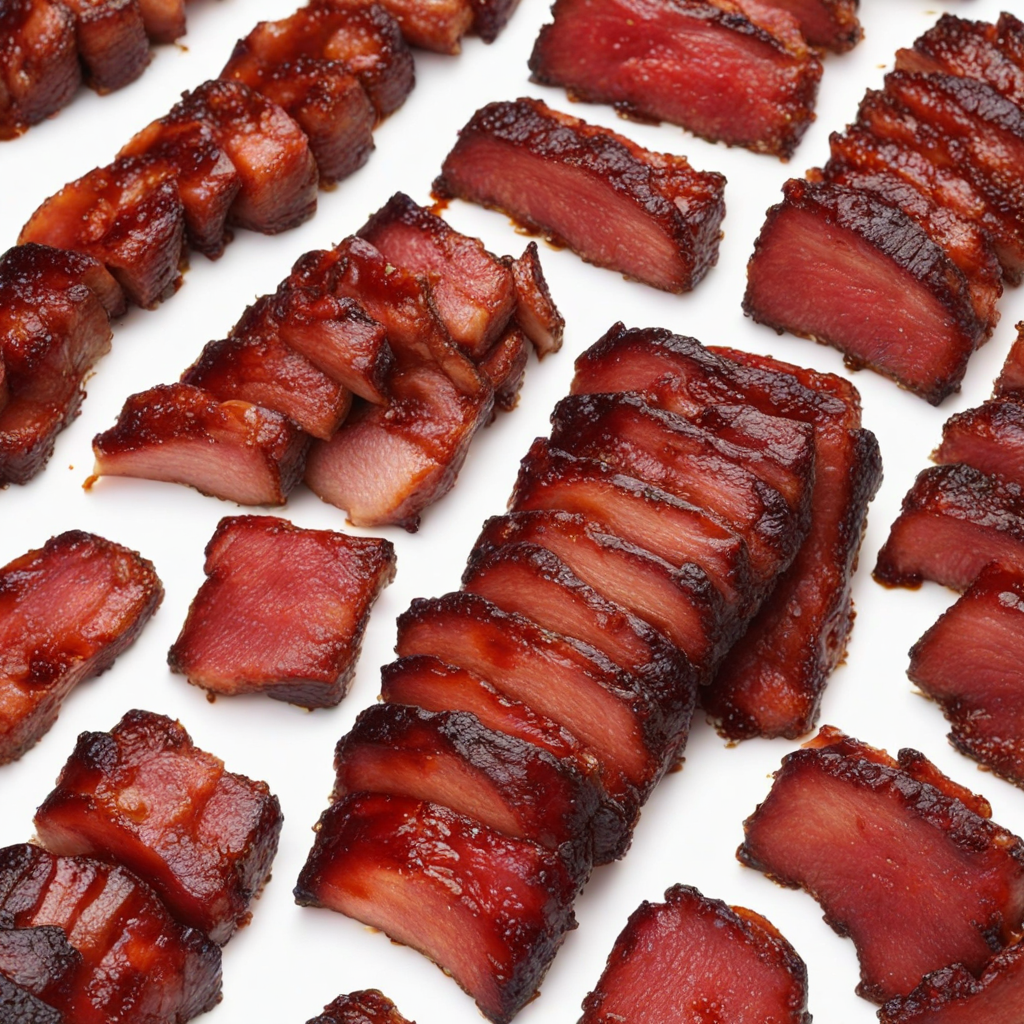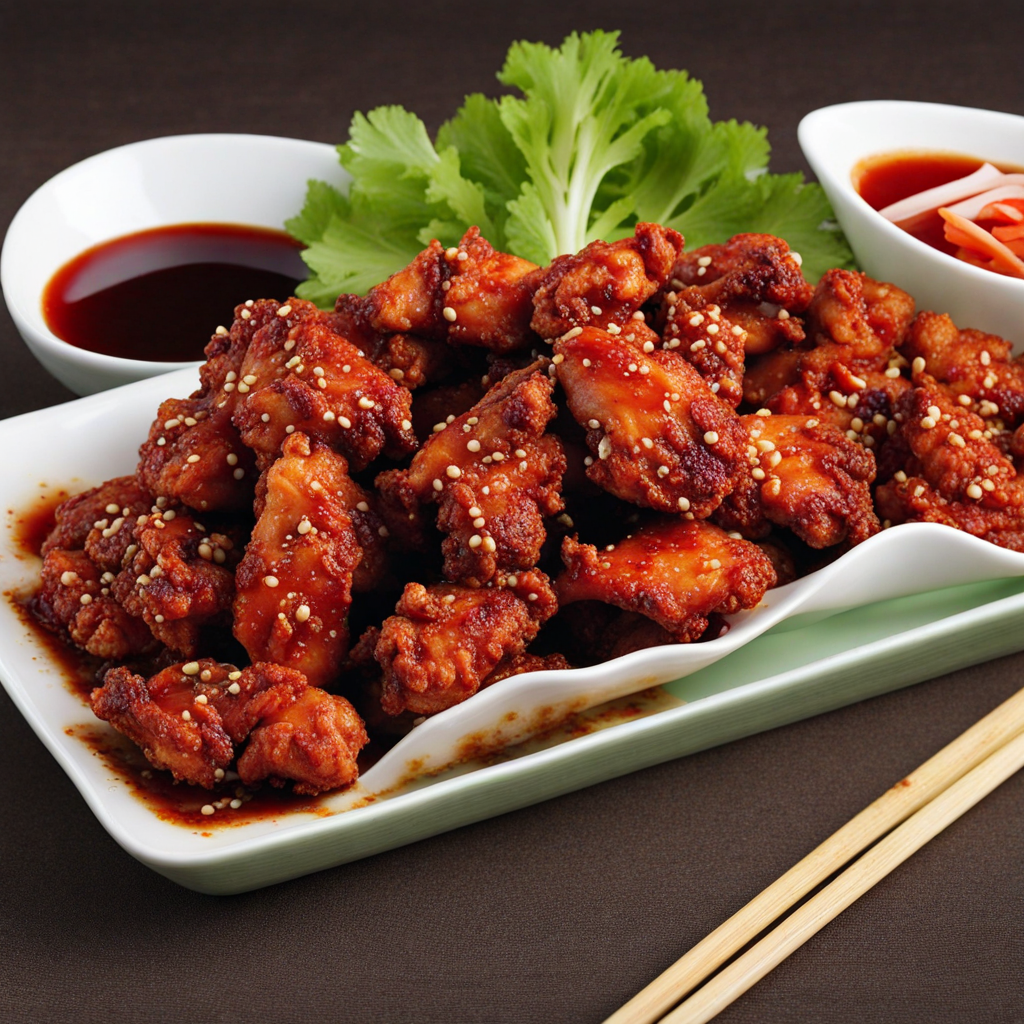Congee
Congee, often referred to as rice porridge, is a beloved dish in Chinese cuisine, known for its comforting and versatile nature. This warm, creamy bowl of rice is typically made by simmering rice in a generous amount of water or broth until it breaks down into a smooth consistency. The result is a soft, velvety texture that is both soothing and satisfying, making it a popular choice for breakfast or as a light meal. The simplicity of congee allows it to serve as a blank canvas, ready to be adorned with an array of toppings that enhance its flavor profile. One of the most delightful aspects of congee is its adaptability; it can be sweet or savory, depending on the toppings and accompaniments you choose. Common savory toppings include shredded chicken, sliced green onions, pickled vegetables, and soy sauce, which add depth and complexity to the dish. For a sweet twist, congee can be enjoyed with ingredients like sugar, fruit, or sweetened condensed milk, making it a versatile option for any palate. Each region in China boasts its own variations, from the plain, comforting bowls of the north to the more elaborate, flavor-packed versions found in the south. Beyond its delicious taste, congee is also celebrated for its nutritional benefits. It is easy to digest, making it a perfect choice for those recovering from illness or simply seeking a warm, nourishing meal. The dish is often enjoyed with a side of pickles, fried dough sticks, or a hard-boiled egg, enhancing its overall appeal. Whether you're savoring a bowl on a chilly morning or enjoying it as a light dinner, congee offers a unique culinary experience that invites you to explore the rich tapestry of flavors and textures that define Chinese cuisine.
How It Became This Dish
The History of 粥 (Zhōu): A Timeless Chinese Comfort Food #### Origins: The Birth of 粥 粥 (zhōu), commonly known as rice porridge, has been a staple in Chinese cuisine for thousands of years. Its origins can be traced back to the Neolithic period, around 4000-3000 BCE, when early agricultural societies began cultivating rice and other grains. Archaeological findings have revealed that the earliest forms of porridge were likely simple mixtures of water and crushed grains, cooked over an open flame. This rudimentary form of food was not only easy to prepare but also highly adaptable, making it a practical choice for early farmers and nomadic tribes. By the time of the Shang Dynasty (c. 1600-1046 BCE), the significance of 粥 in Chinese culture began to solidify. Historical texts from this era reference the consumption of rice porridge as a nourishing meal, particularly for the elderly, sick, and children. This early recognition of 粥 as a comfort food set the stage for its enduring presence in Chinese culinary traditions. #### Cultural Significance: More than Just Food 粥 is not merely a meal; it embodies a rich cultural narrative. In traditional Chinese society, food was often intertwined with health and well-being. 粥, with its easily digestible texture, was recommended by physicians as a remedy for ailments and a source of nourishment for the weak. Its cultural significance is further highlighted during times of hardship. Throughout Chinese history, especially during famines and wars, 粥 served as a vital food source, often made from whatever grains were available, symbolizing resilience and adaptability. Moreover, 粥 is steeped in symbolism. It is commonly associated with purity and simplicity. For instance, during the Chinese New Year, families prepare a special kind of 粥 called "年粥" (nián zhōu), which is believed to bring good fortune and prosperity for the new year. The act of eating 粥 during special occasions or significant life events, like the birth of a child or during illness, underscores its role as a comfort food that nurtures both the body and soul. #### Development Over Time: Regional Variations and Innovations As China’s vast geography and diverse cultures evolved, so did the interpretations of 粥. Each region developed its unique variations, influenced by local ingredients, climate, and cultural practices. 1. Northern China: In the northern provinces, 粥 is often made with glutinous rice or millet, cooked to a thick, creamy consistency. It is typically served plain or with the addition of pickled vegetables, fermented tofu, or meat. In colder climates, this hearty version of 粥 provides warmth and sustenance. 2. Southern China: Conversely, southern regions, particularly Guangdong, favor a lighter, broth-like 粥, known as "艇仔粥" (tǐng zǎi zhōu), which includes a variety of seafood, meats, and vegetables. This style of 粥 is often enjoyed as a breakfast item and is characterized by its delicate flavors and textures. The practice of adding various toppings reflects the emphasis on freshness and balance in southern Chinese cuisine. 3. Sichuan and Other Spicy Regions: In Sichuan Province, 粥 takes on a different dimension, incorporating bold flavors and spices. Here, it is common to see 粥 served with spicy pickles or seasoned oils, offering a contrast to the mild, soothing porridge. 4. Taiwan: In Taiwan, a popular variation called "皮蛋瘦肉粥" (pídàn shòu ròu zhōu) features century eggs and lean pork, showcasing a fusion of flavors that has become a beloved comfort food among locals. The evolution of 粥 continued through the dynasties, adapting to the influences of Buddhism, which emphasized vegetarianism and the use of grains in monastic cooking. The Tang Dynasty (618-907 CE) saw an increased emphasis on the health benefits of grain-based dishes, and many varieties of 粥 began to be documented in literature and culinary texts. #### Modern Interpretations: A Contemporary Culinary Phenomenon In contemporary China, 粥 has transcended its traditional boundaries and has become a canvas for culinary creativity. Urbanization and globalization have introduced new ingredients and preparation methods, leading to innovative interpretations of this ancient dish. Modern chefs experiment with fusion flavors, incorporating ingredients such as quinoa, oats, and even superfoods, while maintaining the essence of 粥 as a nourishing meal. Health-conscious individuals have also embraced 粥 as a gluten-free alternative to conventional cereals, leading to a resurgence in its popularity among younger generations. Furthermore, 粥 culture has developed into a social experience. Many cities have dedicated 粥 shops, where patrons gather to enjoy a shared meal, often accompanied by a variety of side dishes, creating a communal atmosphere reminiscent of ancient dining practices. The rise of food tourism has also highlighted 粥 as a quintessential dish to be savored in various regional styles, showcasing the diversity of Chinese culinary heritage. #### Conclusion: A Food that Unites The history of 粥 is a testament to the resilience and adaptability of Chinese cuisine. From its humble beginnings as a simple grain and water concoction to its status as a beloved comfort food with countless regional variations, 粥 encapsulates the essence of Chinese culture—nourishing, versatile, and deeply rooted in tradition. Today, 粥 continues to weave its way through the fabric of Chinese life, serving not only as sustenance but also as a symbol of comfort, health, and communal bonding. Whether enjoyed in a bustling city restaurant or lovingly prepared at home, 粥 remains a timeless dish that unites generations, reflecting the evolving yet enduring nature of Chinese culinary history.
You may like
Discover local flavors from China


